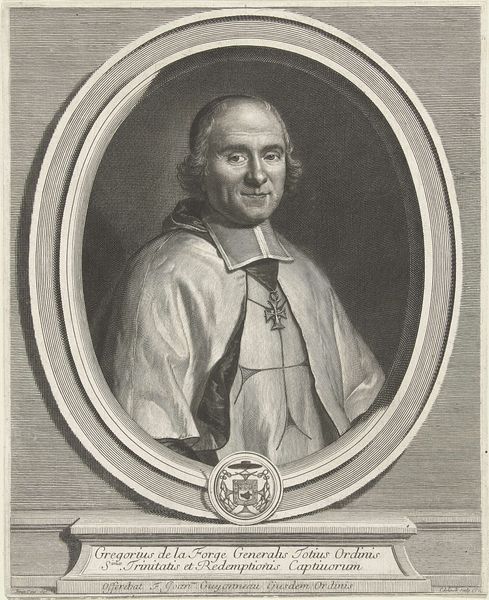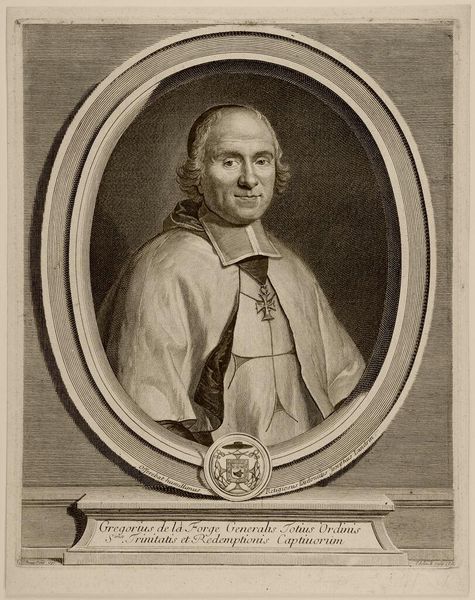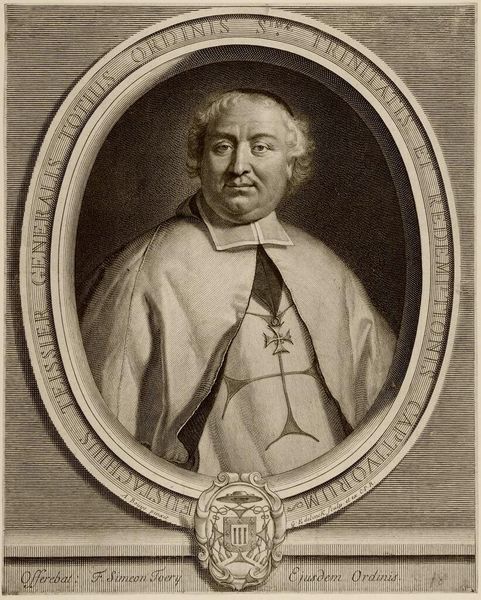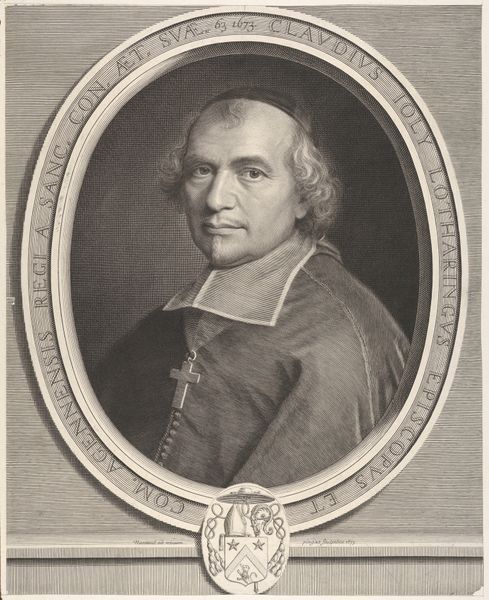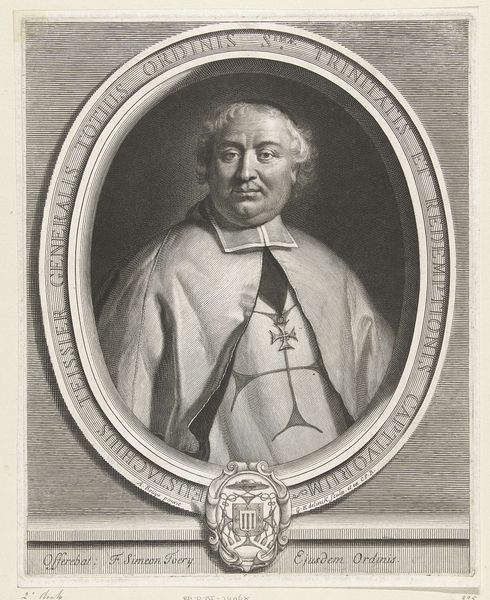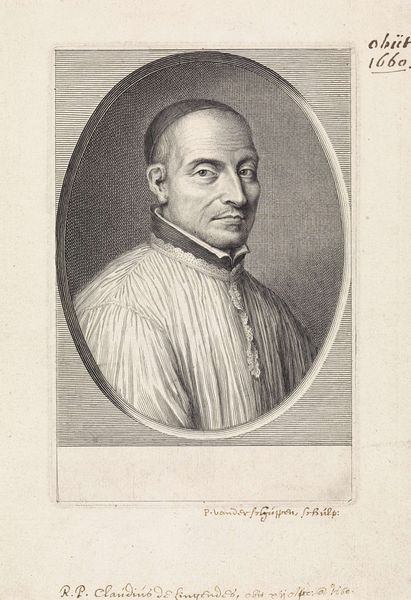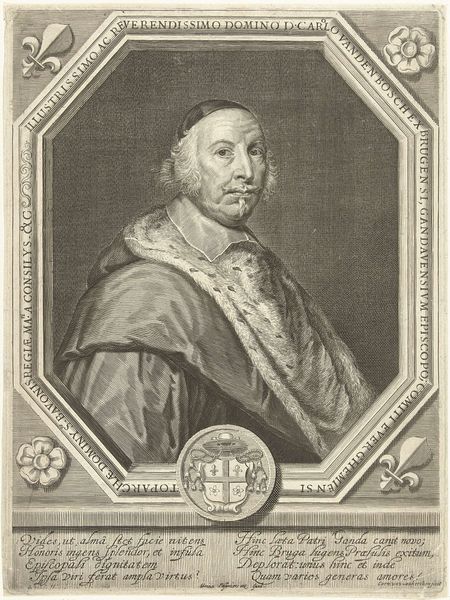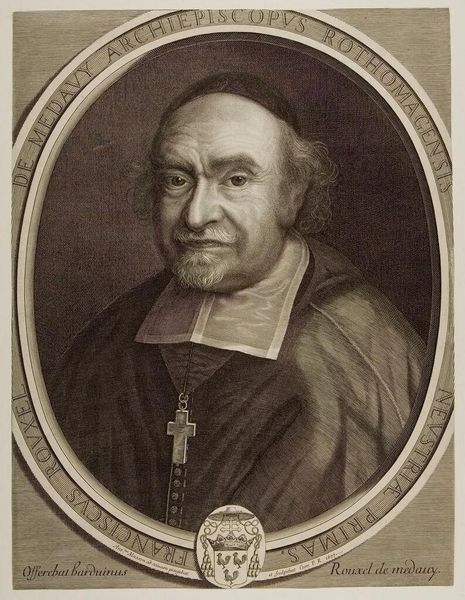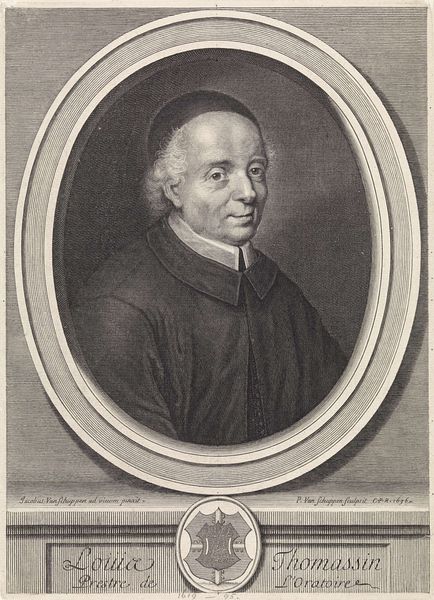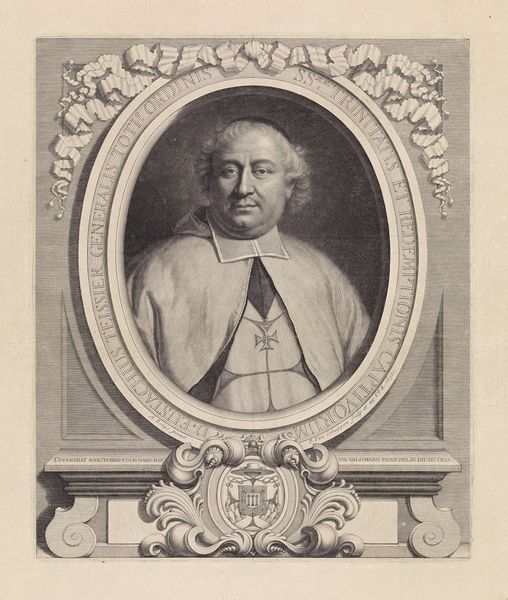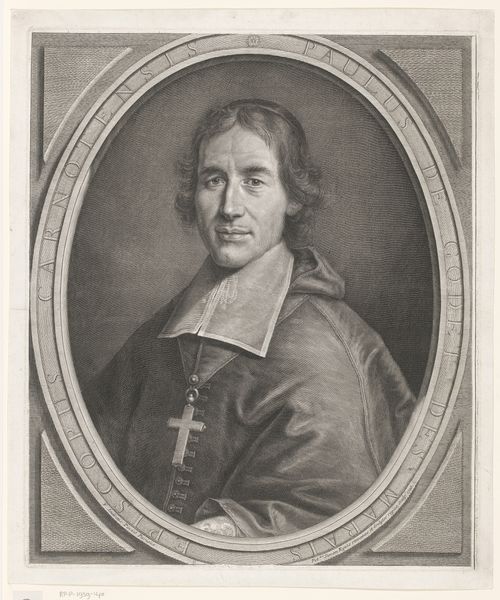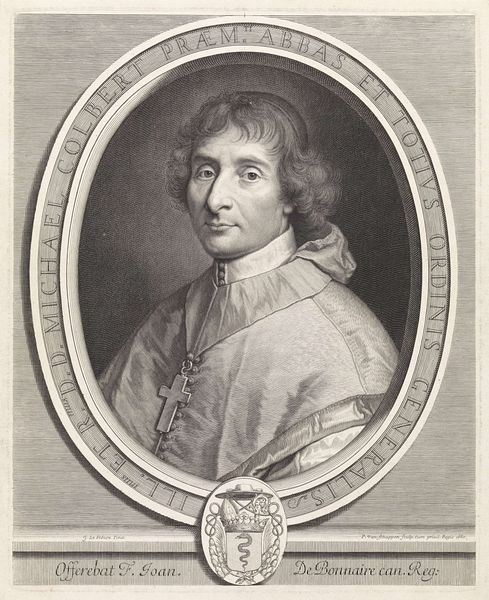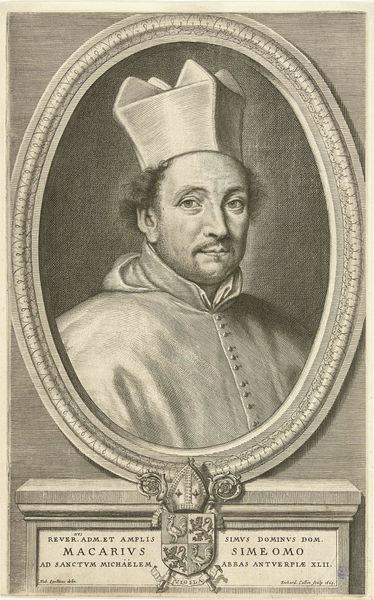
print, engraving
#
portrait
#
baroque
# print
#
charcoal drawing
#
portrait drawing
#
academic-art
#
engraving
Dimensions: height mm, width mm
Copyright: Rijks Museum: Open Domain
Curator: Up next we have a captivating engraving, "Portret van Grégoire de la Forge." The artist, Gérard Edelinck, likely created this piece sometime between 1666 and 1707. Editor: It's remarkable how a simple print can convey such a sense of gravitas. The oval frame immediately creates a feeling of historical distance, doesn’t it? And look at the incredible detail achieved with just lines. Curator: Absolutely. Let's consider the engraving process. Think about the labour involved in cutting those lines into the metal plate to create such fine details and shading. Each line, each mark represents countless hours. The print, ultimately, becomes a reproduction, making the sitter and his image more accessible. Editor: True, but consider also the visual language Edelinck employs. The man's gaze is direct, unwavering. And the symbols: the text encircling the portrait, the crest at the bottom. The symbols signify his role as General of the Order of the Holy Trinity for the Redemption of Captives, I believe. What an intense and meaningful commitment. Curator: Interesting observation about the symbolism and context. It reminds us that the purpose of such portraits served particular socio-economic contexts. Who had access to it? Why? It may have originally been distributed among the members or patrons of the Order. Editor: It definitely adds layers to our understanding. These images also offer a form of remembrance, perpetuating cultural values and beliefs, giving weight and meaning. What would the original audience make of it? Curator: And what do we, the modern viewers, make of it now, removed by centuries from that original context? Are we appreciating the labor behind it or the message conveyed through time? Perhaps a bit of both. Editor: Perhaps so! Thinking of the intense, quiet commitment of de la Forge's order to its spiritual duty and the weight of this image through time certainly gives one a certain contemplative energy. Curator: I agree. Considering the original crafting, labour and production process that created such images brings a different focus on how we might relate to these artworks.
Comments
No comments
Be the first to comment and join the conversation on the ultimate creative platform.
